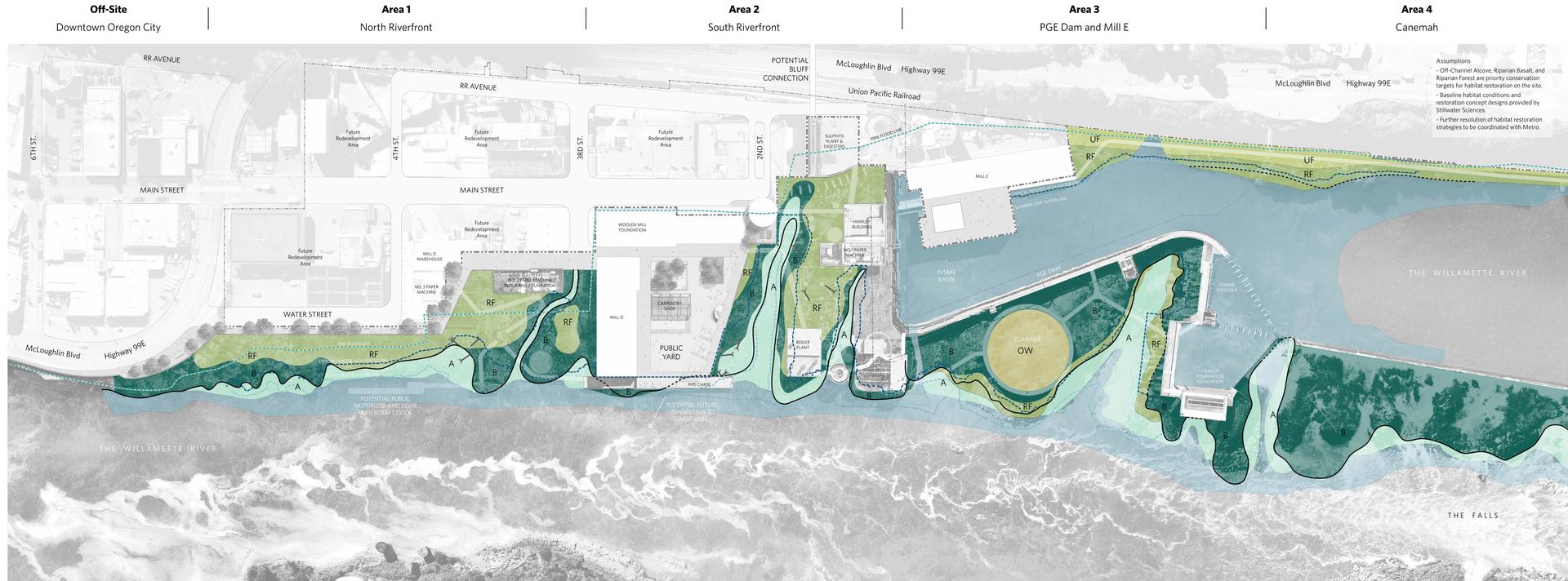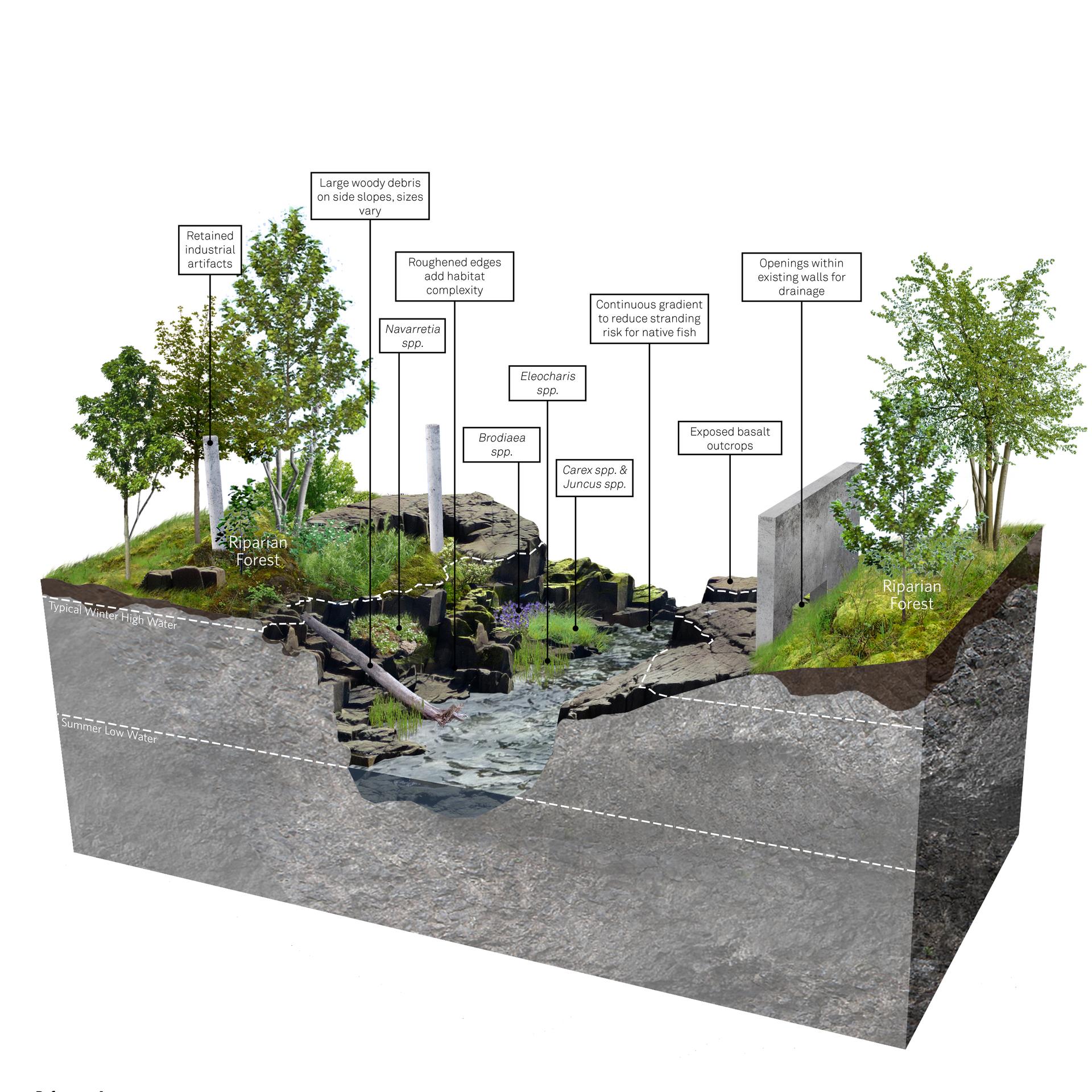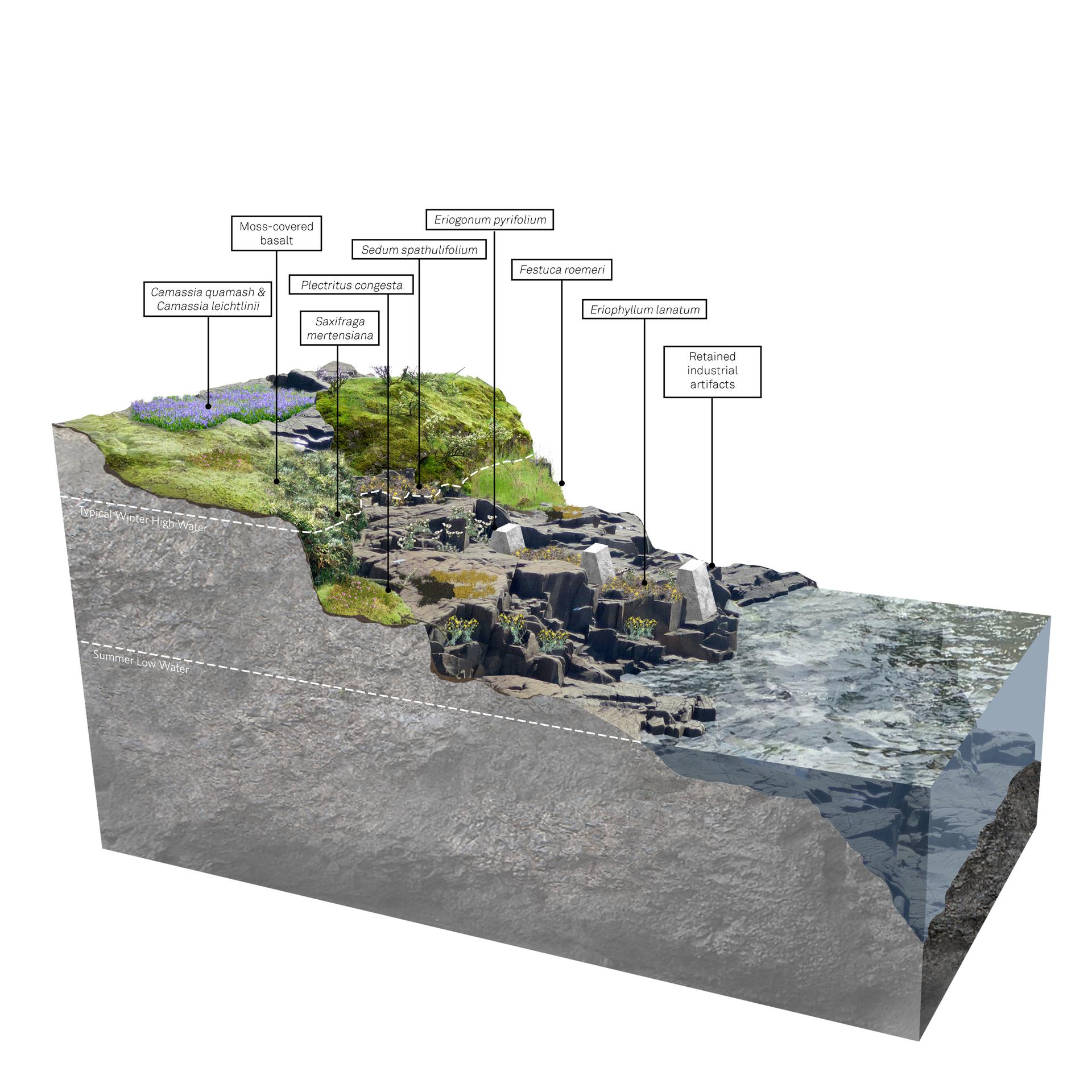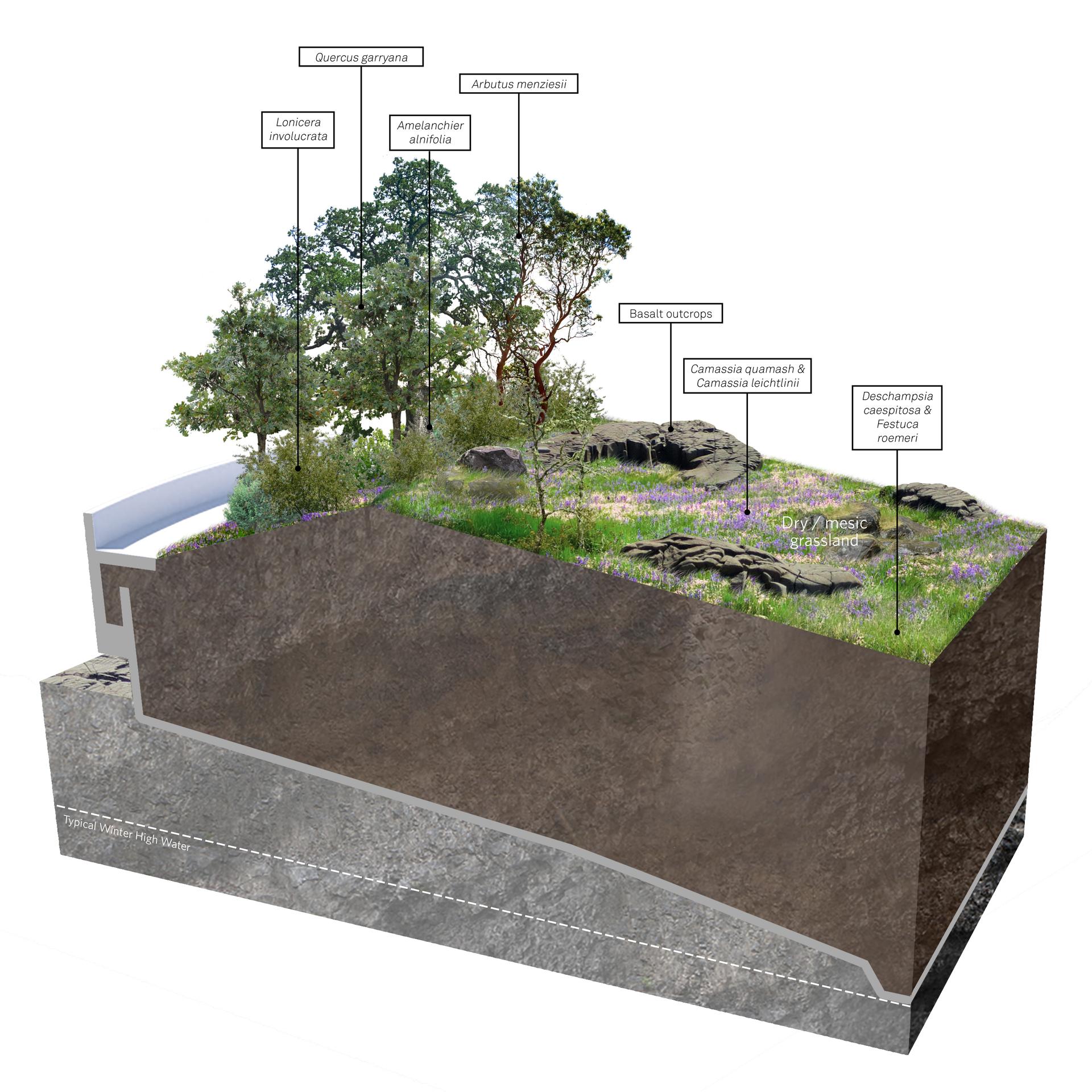
Willamette Falls Riverwalk
Concept Design, Habitat Restoration

Off-Channel Alcove
Highly diverse and dynamic in nature, off-channel alcove habitat on the Willamette River serves as an uncommon and important resource for native fish, wildlife and plant species. Alcove habitat historically existed in greater abundance along the site shoreline. Much of the former off- channel habitat has been filled in and covered by infrastructure. Restoration of alcove habitat serves as a key opportunity for enhancing off- channel areas for native fish (i.e. Chinook salmon, steelhead, and Pacific lamprey) as well as other aquatic species.

Riparian Basalt
The basalt outcrops and rocky substrate along the shoreline contribute to the mosaic of rocky habitats located to the north and south of the project site in and along the Willamette River. The outcrops are a relic of the Bretz or Missoula Floods, and exposures along this part of the Willamette River provide important habitat for both mesic and xeric species more common in the Columbia River Gorge. Shallow depressions that hold water on the basalt also provide unique wetland habitat. The vegetation assemblages found on basalt outcropping of the site are similar to those found in neighboring oak habitat and is key habitat for pollinators and birds.

Riparian Forest
Riparian forest plant community areas are associated with alluvial soil and springs and seeps emerging from the site. Large areas of the site may have been historically dominated by this habitat but due to significant alterations and industrial development at the site this habitat has been reduced to small areas.

Oak Woodland & Savanna
Dry to mesic grasslands occurring on hilltops and slopes with patches of shrubs and Oregon white oak. This habitat type surrounds the Willamette Falls site and can be found along the McLoughlin promenade. Oak Savanna is an Oregon Department of Fish and Wildlife conservation strategy habitat.